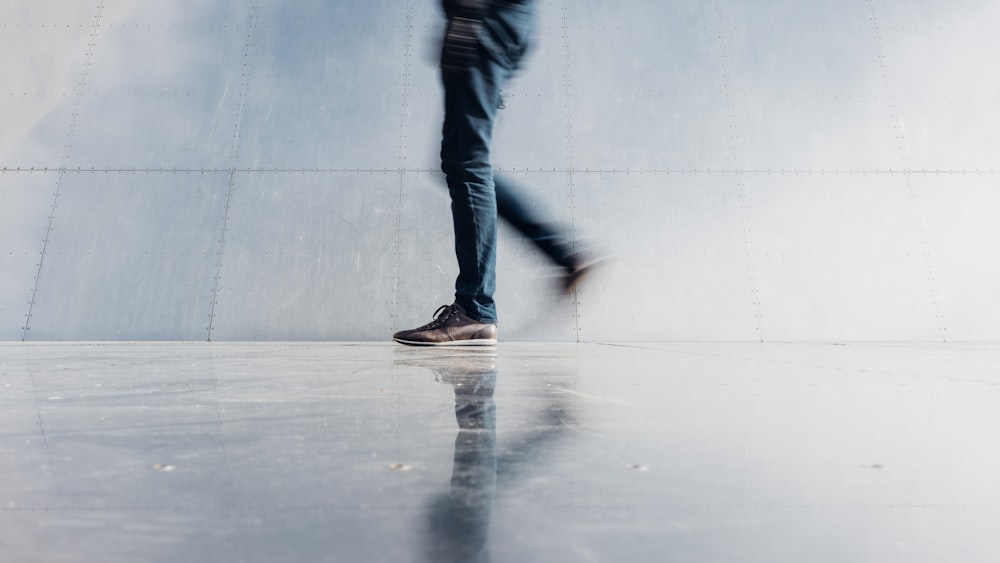目次
脳卒中症例に対する後ろ歩き練習は有効なの?
理学療法士・作業療法士が脳卒中症例を対象として歩行トレーニングを行う機会は多いと思います.
歩行トレーニングの中でも昔からよく行われるのが後ろ歩き練習です.
ただこの後ろ歩き練習の効果ってどうなのでしょうか?
今回は脳卒中症例に対する後ろ歩き練習の効果を考えるうえで参考になる論文をご紹介させていただきます.

今回ご紹介する論文
J Biomech. 2023 May 19;155:111644. doi: 10.1016/j.jbiomech.2023.111644. Online ahead of print.
The influence of backward versus forward locomotor training on gait speed and balance control post-stroke: Recovery or compensation?
Kanika Bansal 1, Arian Vistamehr 2, Christy L Conroy 2, Emily J Fox 3, Dorian K Rose 4
Affiliations expand
PMID: 37229888 DOI: 10.1016/j.jbiomech.2023.111644
今回ご紹介する論文は2023年に掲載された論文です.
研究の背景・目的
Backward walking training has been reported to improve gait speed and balance post-stroke. However, it is not known if gains are achieved through recovery of the paretic limb or compensations from the nonparetic limb. The purpose of this study was to compare the influence of backward locomotor training (BLT) versus forward locomotor training (FLT) on gait speed and dynamic balance control, and to quantify the underlying mechanisms used to achieve any gains.
後ろ歩き練習は脳卒中後の歩行速度とバランスを改善することが報告されております.
しかしながら後ろ歩き練習の効果が麻痺肢の回復によるものなのか,非麻痺肢の代償によるものなのかは不明であります.
この研究では後ろ歩き練習(BLT)と前歩き練習(FLT)の歩行速度と動的バランス制御への影響を比較し,どのようなメカニズムで効果が得られるかを定量化することを目的としております.
研究の方法
Eighteen participants post chronic stroke were randomly assigned to receive 18 sessions of either FLT (n = 8) or BLT (n = 10). Pre- and post-intervention outcomes included gait speed (10-meter Walk Test) and forward propulsion (time integral of anterior-posterior ground-reaction-forces during late stance for each limb). Dynamic balance control was assessed using clinical (Functional Gait Assessment) and biomechanical (peak-to-peak range of whole-body angular-momentum in the frontal plane) measures. Balance confidence was assessed using the Activities-Specific Balance Confidence scale.
脳卒中後遺症のある18例の対象者を,前歩き歩行練習(n = 8)または後ろ歩き練習(n = 10)の18セッションを受けるように無作為に割り付けております.
介入前後のアウトカムとして歩行速度(10m歩行テスト)および前方推進力(各肢の立脚後期の前方-後方接地反力時間積分値)を評価しております.
動的バランスについては臨床的(機能的歩行評価)および生体力学的(前額面における全身の角運動量のピークからピークまでの範囲)測定法を用いて評価しております.
バランスの信頼度は活動別バランス信頼度スケールを用いて評価しております.
研究の結果
While gait speed and balance confidence improved significantly within the BLT group, these improvements were associated with an increased nonparetic limb propulsion generation, suggesting use of compensatory mechanisms. Although there were no improvements in gait speed within the FLT group, paretic limb propulsion generation significantly improved post-FLT, suggesting recovery of the paretic limb.
後ろ歩き歩行練習群では,歩行速度とバランス感覚が有意に改善されましたが,この改善は非麻痺性四肢推進力の発生量の増加と関連しており,代償機構の利用を示唆しておりました.
前歩き練習群では歩行速度の改善は見られませんでしたが,前歩き練習後に麻痺肢の推進力が有意に向上したことから,麻痺肢の回復が示唆されました.
研究の結論
Neither training group improved in dynamic balance control, implying the need of balance specific training along with locomotor training to improve balance control post-stroke. Despite the within-group differences, there were no significant differences between the FLT and BLT groups in the achieved gains in any of the outcomes.
両群とも動的バランス制御は改善しなかったことから,脳卒中後のバランス制御を改善するためには,歩行トレーニングに加え,バランスに特化したトレーニングが必要であることが示唆されました.
前歩き練習群と後ろ歩き練習群では群内差はあるものの,いずれのアウトカムにおいても有意な差は見られませんでした.
今回は脳卒中症例に対する後ろ歩き練習の効果を考えるうえで参考になる論文をご紹介させていただきました.
今回の結果から考えると前向き歩行練習と後ろ向き歩行練習では改善する機能が異なるということですね.
麻痺肢の機能改善に焦点を当てるのであれば前向き歩行練習,非麻痺肢の機能改善に焦点を当てるのであれば後ろ向き歩行練習ということになるでしょうか.






